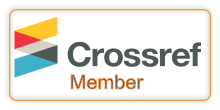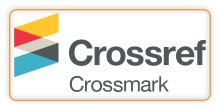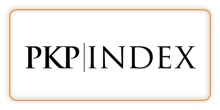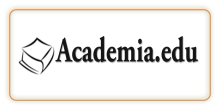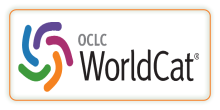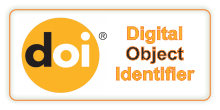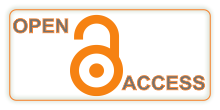EVALUATION OF E-LEARNING OUTCOMES OF MATHEMATICS STUDENTS USING THE COURSE COMPLETION METHOD
DOI:
https://doi.org/10.29121/granthaalayah.v12.i6.2024.5619Keywords:
E-learning, Learning Outcomes, Report Completion, Course CompleteAbstract [English]
The current development of internet technology has changed the direction of the learning system at both elementary and tertiary levels by means of online, blended learning, and e-learning. This research aims to determine and analyze the learning outcomes of students using course completion during lectures using the eLearning method. The research subjects are Bina Darma University students. Data collection was carried out in this research through observation and taking primary data from the e-learning system. The instruments in this research include the independent variable (X), which is report completion, and the dependent variable (Y), which is elearning learning outcomes. The resulting research results are: 1. There is a positive influence from the activity task variable on the student learning outcome variable, which is known to be active in carrying out the tasks in e-learning. 2. There is a positive influence from the material variable on the student learning outcome variable, which is known to be active in opening the material. provided in e-learning. Multiple linear regression tests result from the course completion variable on student learning outcomes. It can be concluded that there is a positive influence on the learning outcomes of variable Y from variable X. Students can also share information or opinions on various matters relating to the subject matter or assignments given by the lecturer. Apart from that, lecturers can place learning materials and assignments that students must complete in certain places in e-learning for students to access.
Downloads
References
Anugerah, R. P., & Kusuma, W. A. (2021). Keefektivitasan Penggunaan Platform LMS Dalam Pelaksanaan Pembelajaran Jarak Jauh. Jurnal Komputer Dan Informatika, 9(2), 127–132. https://doi.org/10.35508/jicon.v9i2.4319 DOI: https://doi.org/10.35508/jicon.v9i2.4319
Elearning Universitas Negeri Yogyakarta. (2021). Petunjuk Penggunaan Besmart v3. 45.
Ghozali, I. (2018). Aplikasi Analisis Multivariate dengan Program SPSS-Imam Ghozali-2018. In Badan Penerbit Universitas Diponegoro.
Hardani, A.N.H., Andriani, H., Fardani, R. A., Ustiawati, J., Utami, E. F., Sukmana, D., J. & Istiqomah, R. (2020). Metode Penelitian Kualitatif dan Kuantitatif.
Hartanto, W. (2016). Penggunaan E-Learning Sebagai Media Pembelajaran. Jurnal Pendidikan Ekonomi, 10(1), 1–18.
Larasati, N. A., & Andayani, S. (2019). Pengaruh Penggunaan Learning Management System (LMS) Terhadap Tingkat Kepuasan Mahasiswa Menggunakan Metode DeLone and McLean. Jurnal Teknik Informatika Unika St. Thomas (JTIUST), 04(01), 2548–1916. https://doi.org/10.17605/jti.v4i1.506
Muhammad, H., R. Eka Murtinugraha, & Sittati Musalamah. (2020). Pengembangan Media Pembelajaran E-Learning Berbasis Moodle Pada Mata Kuliah Metodologi Penelitian. Jurnal PenSil, 9(1), 54–60. https://doi.org/10.21009/jpensil.v9i1.13453 DOI: https://doi.org/10.21009/jpensil.v9i1.13453
Nabillah, T., & Abadi, A. P. (2019). Faktor Penyebab Rendahnya Hasil Belajar Siswa. Prosiding Seminar Nasional Matematika Dan Pendidikan Matematika Sesiomadika, 659.
Prasetyo, R. A. (2022). Analisis Regresi Linear Berganda Untuk Melihat Faktor Yang Berpengaruh Terhadap Kemiskinan di Provinsi Sumatera Barat. Journal of Mathematics UNP, 7(2), 62. https://doi.org/10.24036/unpjomath.v7i2.12777 DOI: https://doi.org/10.24036/unpjomath.v7i2.12777
Puspitarini, D. (2022). Blended Learning sebagai Model Pembelajaran Abad 21. Ideguru: Jurnal Karya Ilmiah Guru, 7(1), 1–6. https://doi.org/10.51169/ideguru.v7i1.307 DOI: https://doi.org/10.51169/ideguru.v7i1.307
Rizal, S., & Walidain, B. (2019). Pembuatan Media Pembelajaran E-Learning Berbasis Moodle Pada Matakuliah Pengantar Aplikasi Komputer Universitas Serambi Mekkah. Jurnal Ilmiah Didaktika: Media Ilmiah Pendidikan Dan Pengajaran, 19(2), 178. https://doi.org/10.22373/jid.v19i2.5032 DOI: https://doi.org/10.22373/jid.v19i2.5032
Siregar, S. F. (2019). Meningkatkan Hasil Belajar Siswa Pada Pelajaran Ilmu Pengetahuan Alam Di Kelas Vii-2 Melalui Pendekatan Pembelajaran Cara Belajar Siswa Aktif Di Smp Negeri 29 Medan. Jurnal Biolokus, 2(2), 217. https://doi.org/10.30821/biolokus.v2i2.539 DOI: https://doi.org/10.30821/biolokus.v2i2.539
Syarifudin, A. S. (2020). Impelementasi Pembelajaran Daring Untuk Meningkatkan Mutu Pendidikan Sebagai Dampak Diterapkannya Social Distancing. Jurnal Pendidikan Bahasa Dan Sastra Indonesia Metalingua, 5(1), 31–34. https://doi.org/10.21107/metalingua.v5i1.7072 DOI: https://doi.org/10.21107/metalingua.v5i1.7072
Ucu, N. L., Paturusi, S. D. E., & Sompie, S. R. U. A. (2018). Analisa Pemanfaatan E-Learning Untuk Proses Pembelajaran. Jurnal Teknik Informatika, 13(1). https://doi.org/10.35793/jti.13.1.2018.20196 DOI: https://doi.org/10.35793/jti.13.1.2018.20196
Wicaksono, D., & Iswan. (2019). Upaya Meningkatkan Hasil Belajar Peserta Didik Melalui Penerapan Model Pembelajaran Berbasis Masalah Di Kelas IV Sekolah Dasar Muhammadiyah 12 Pamulang, Banten. Jurnal Ilmiah PGSD, 3(2), 111–126. https://doi.org/10.33578/pjr.v2i3.5555 DOI: https://doi.org/10.33578/pjr.v2i3.5555
Widiyono, A. (2021). Pengaruh Penggunaan LMS dan Aplikasi Telegram terhadap Aktivitas Belajar. Jurnal Penelitian Ilmu Pendidikan, 14(1), 91–101. https://doi.org/10.21831/jpipfip.v14i1.37857 DOI: https://doi.org/10.21831/jpipfip.v14i1.37857
Wiragunawan, I. G. N. (2022). Pemanfaatan Learning Management System (Lms) Dalam Pengelolaan Pembelajaran Daring Pada Satuan Pendidikan. EDUTECH: Jurnal Inovasi Pendidikan Berbantuan Teknologi, 2(1), 83–90. https://doi.org/10.51878/edutech.v2i1.981 DOI: https://doi.org/10.51878/edutech.v2i1.981
Zagoto, M. M. (2022). Peningkatan Hasil Belajar Mahasiswa Pada Mata Kuliah Dasar-Dasar Akuntansi 1 Melalui Implementasi Model Pembelajaran Kooperatif Word Square. Educativo: Jurnal Pendidikan, 1(1), 1–7. https://doi.org/10.56248/educativo.v1i1.1 DOI: https://doi.org/10.56248/educativo.v1i1.1
Published
How to Cite
Issue
Section
License
Copyright (c) 2024 Jemakmun Makmun, M. Taufik Rahmatullah, Mukran Roni

This work is licensed under a Creative Commons Attribution 4.0 International License.
With the licence CC-BY, authors retain the copyright, allowing anyone to download, reuse, re-print, modify, distribute, and/or copy their contribution. The work must be properly attributed to its author.
It is not necessary to ask for further permission from the author or journal board.
This journal provides immediate open access to its content on the principle that making research freely available to the public supports a greater global exchange of knowledge.












